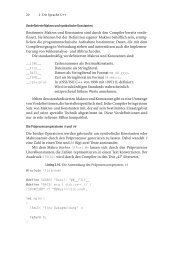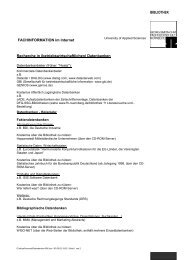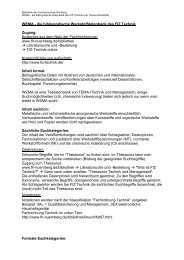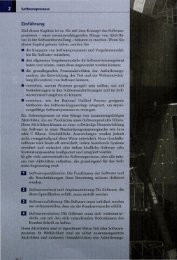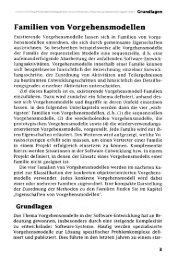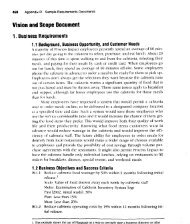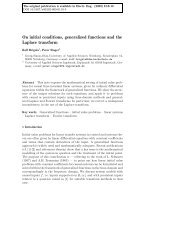Establishing the Product Vision and Project Scope
Establishing the Product Vision and Project Scope
Establishing the Product Vision and Project Scope
You also want an ePaper? Increase the reach of your titles
YUMPU automatically turns print PDFs into web optimized ePapers that Google loves.
78 Part II Software Requirements Development<br />
One sign that <strong>the</strong> business requirements are insufficiently defined is that<br />
certain features are initially included, <strong>the</strong>n deleted, <strong>and</strong> <strong>the</strong>n added back in<br />
later. <strong>Vision</strong> <strong>and</strong> scope issues must be resolved before <strong>the</strong> detailed functional<br />
requirements can be fully specified. A statement of <strong>the</strong> project's scope <strong>and</strong><br />
limitations helps greatly with discussions of proposed features <strong>and</strong> target<br />
releases. The vision <strong>and</strong> scope also provide a reference for making decisions<br />
about proposed requirement changes <strong>and</strong> enhancements. Same companies<br />
print <strong>the</strong> vision <strong>and</strong> scope highlights on a poster board that's brought to every<br />
project meeting so that <strong>the</strong>y can quickly judge whe<strong>the</strong>r a proposed change is in<br />
or out of scope.<br />
Defining <strong>the</strong> <strong>Vision</strong> Through Business Requirements<br />
The product vision aligns all stakeholders in a common direction. The vision<br />
describes what <strong>the</strong> product is about <strong>and</strong> what it eventually could become. The<br />
project scope identifies what portion of <strong>the</strong> ultimate long-term product vision<br />
<strong>the</strong> current project will address. The statement of scope draws <strong>the</strong> boundary<br />
between what's in <strong>and</strong> what's out. That is, <strong>the</strong> scope also defines <strong>the</strong> project's<br />
limitations. The details of a project's scope are represented by <strong>the</strong> requirements<br />
baseline that <strong>the</strong> team defines for that project.<br />
The vision applies to <strong>the</strong> product as a whole. It will change relatively<br />
slowly as a product's strategic positioning or an information system's business<br />
objectives evolve over time. The scope pertains to a specific project or iteration<br />
that will implement <strong>the</strong> next increment of <strong>the</strong> product's functionality, as shown<br />
in Figure 5-l. <strong>Scope</strong> is more dynamic than vision because <strong>the</strong> project manager<br />
adjusts <strong>the</strong> contents of each release within its schedule, budget, resource, <strong>and</strong><br />
quality constraints. The planner's goal is to manage <strong>the</strong> scope of a specific<br />
development or enhancement project as a defined subset of <strong>the</strong> gr<strong>and</strong> strategic<br />
vision. The scope statement for each project, or for each iteration or enhancement<br />
in an evolving product, can appear in that project's SRS, ra<strong>the</strong>r than in a<br />
separate vision <strong>and</strong> scope document. Major new projects should have both a<br />
complete vision <strong>and</strong> scope document <strong>and</strong> an SRS. See Chapter 10, "Documenting<br />
<strong>the</strong> Requirements," for an SRS template.



